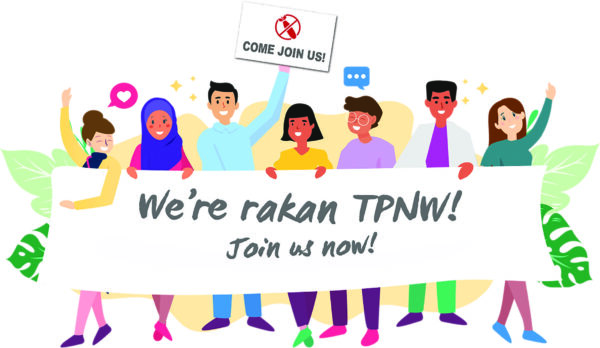- What is the TPNW?
- When was the TPNW adopted and what is its current status?
- Why do we need the Treaty?
- Why is the Soka Gakkai passionate about the abolition of nuclear weapons?
- How do Soka Gakkai organisations around the world support the Treaty on the Prohibition of Nuclear Weapons?
- Does Malaysia Support Nuclear Abolition?
- How has SGM been promoting nuclear abolition?
- What is the TPNW
The Treaty on the Prohibition of Nuclear Weapons (TPNW) or the nuclear ban treaty is the first legally binding international instrument to comprehensively prohibit nuclear weapon activities. These include undertakings not to develop, test, produce, acquire, possess, stockpile, use or threaten to use nuclear weapons.
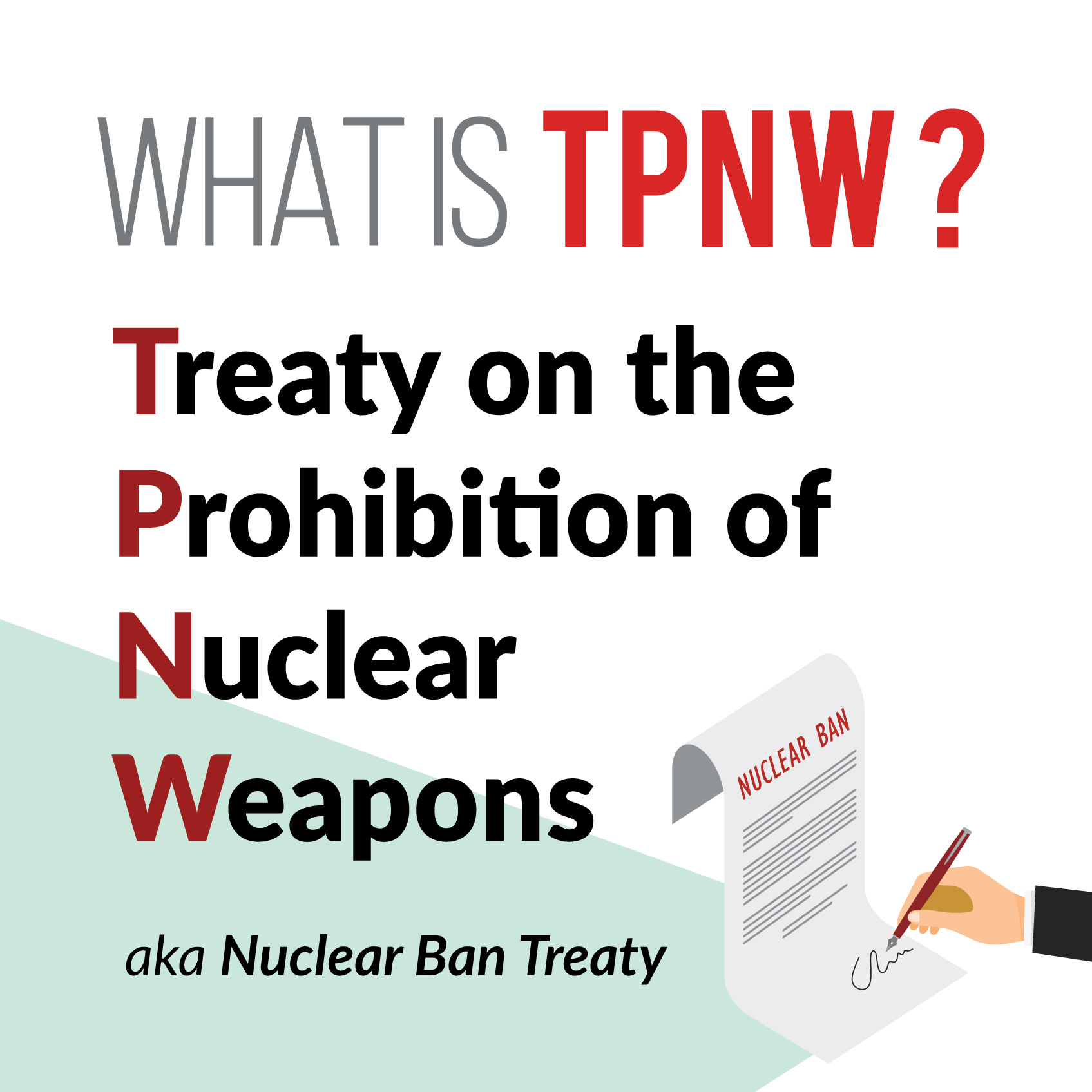 States parties to this treaty will be obliged to prevent and suppress any activity prohibited under the TPNW undertaken by persons or on territory under its jurisdiction or control. The Treaty also obliges States parties to provide adequate assistance to individuals affected by the use or testing of nuclear weapons, as well as to take necessary and appropriate measures of environmental remediation in areas under its jurisdiction or control contaminated as a result of activities related to the testing or use of nuclear weapons.
States parties to this treaty will be obliged to prevent and suppress any activity prohibited under the TPNW undertaken by persons or on territory under its jurisdiction or control. The Treaty also obliges States parties to provide adequate assistance to individuals affected by the use or testing of nuclear weapons, as well as to take necessary and appropriate measures of environmental remediation in areas under its jurisdiction or control contaminated as a result of activities related to the testing or use of nuclear weapons.The TPNW also complements states’ commitments to the Treaty on the Non-Proliferation of Nuclear Weapons (NPT) and the Comprehensive Test Ban Treaty (CTBT).
-
When was the TPNW adopted and what is its current status?
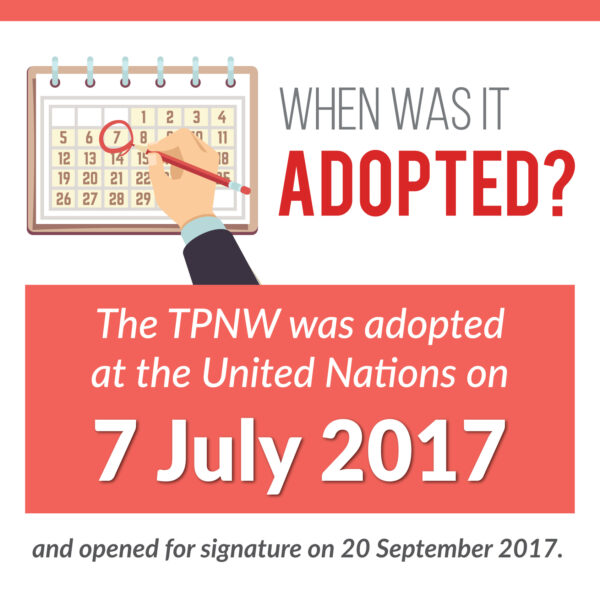
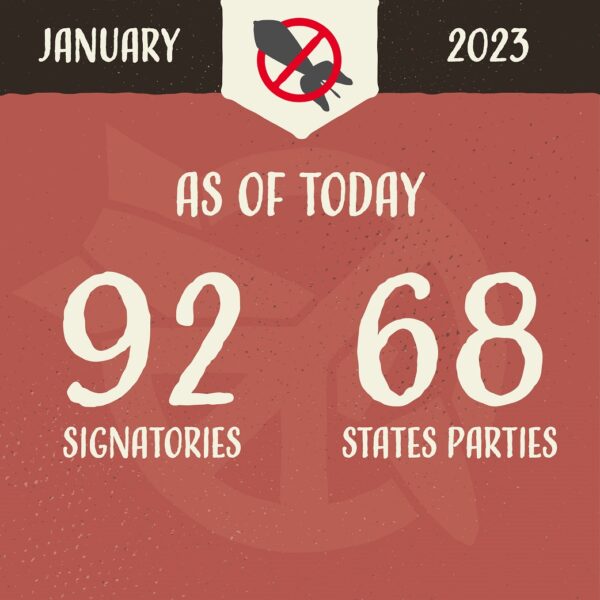
Adoption
The Treaty was adopted by the Conference (by a vote of 122 States in favour, with one vote against and one abstention) at the United Nations on 7 July 2017, and opened for signature on 20 September 2017.Signatures, Ratifications & Entry into Force
Once ratified by 50 countries, the treaty would enter into force as international law. Honduras became the 50th member state to ratify on October 24, 2020. This led to the entry into force of the treaty on January 22, 2021, thereby making it a legally binding international instrument to comprehensively prohibit nuclear weapons.
As of January 2023, the Treaty has been signed by 92 states and ratified by 68.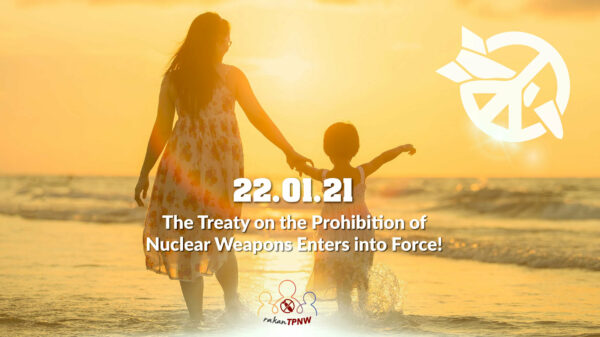
The First Meeting of States Parties & the Vienna Declaration
The first Meeting of States Parties to the TPNW (1MSP) was originally to be held within a year of its entry into force (Article 8.2). However, it was postponed twice due to the COVID-19 pandemic and finally held in Vienna on June 21-23, 2022.
The TPNW First Meeting of States Parties adopted the Vienna Declaration and the 50-point Vienna Action Plan. With this declaration, state parties agreed:
(i) to do more to help people and places harmed by nuclear weapons;
(ii) civil society and affected communities will be included in the discussion;
(iii) a gender-responsive approach will be used to implement the treaty;
(iv) states will work closely with scientists; and
(v) that the TPNW complements the current disarmament and non-proliferation architecture. - Why do we need the Treaty?
 Along with climate change, nuclear weapons pose the greatest threat to life on Earth and the planet itself. The atomic bombings of Hiroshima and Nagasaki in August 1945 caused the deaths of over 100,000 people in the days after the blasts. In the years that followed, many others died or suffered greatly due to the effects of post-blast radiation. The nuclear weapons that we have today – close to 13,000 worldwide – are many times more powerful than the ones dropped on Hiroshima and Nagasaki. A single detonation will cause catastrophic humanitarian consequences and massive destruction of the environment that span decades and generations.
Along with climate change, nuclear weapons pose the greatest threat to life on Earth and the planet itself. The atomic bombings of Hiroshima and Nagasaki in August 1945 caused the deaths of over 100,000 people in the days after the blasts. In the years that followed, many others died or suffered greatly due to the effects of post-blast radiation. The nuclear weapons that we have today – close to 13,000 worldwide – are many times more powerful than the ones dropped on Hiroshima and Nagasaki. A single detonation will cause catastrophic humanitarian consequences and massive destruction of the environment that span decades and generations.Nuclear weapons breed fear and mistrust among nations, as some governments can threaten to wipe out entire cities in a flash. The high cost of production, maintenance and modernisation of nuclear weapons divert public funds from vital services such as healthcare, education and disaster relief. Banning these immoral, inhumane weapons under international law is a critical step along the path to ending them.
Nuclear weapons are the most demonic and indiscriminate weapons ever created. If we do not end them, they will end us.
-
Why is the Soka Gakkai passionate about the abolition of nuclear weapons?
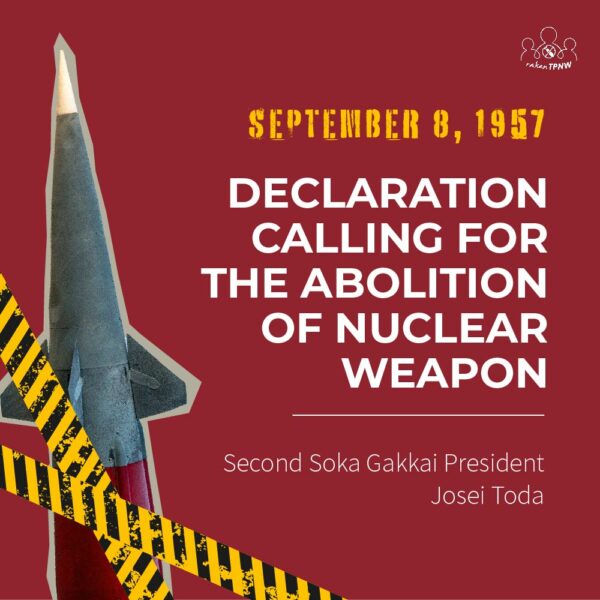 As Buddhists who treasure life and peace, the commitment to upholding the dignity of life is at the heart of the Soka Gakkai’s movement.
As Buddhists who treasure life and peace, the commitment to upholding the dignity of life is at the heart of the Soka Gakkai’s movement. In 1957, second Soka Gakkai president Josei Toda made a historic declaration calling for the abolition of nuclear weapons. This is the starting point for Soka Gakkai’s peace movement. In his declaration, Toda stated that he wanted to “expose and rip out the claws that lie hidden in the very depths of such weapons,” emphasizing that what we need to challenge is the complete disregard for people’s inviolable right to live that lies at the root of nuclear weapons.
Daisaku Ikeda succeeded Toda as the third president of the Soka Gakkai. Under his leadership, SGI began to raise awareness of the threat of nuclear weapons by holding exhibitions on war and the threat of nuclear weapons at the United Nations headquarters in the 1980s, and by collecting experiences and interviews with atomic bomb survivors in Japan.
Since 1983, he has been issuing annual peace proposals outlining, among other things, concrete roadmaps toward the elimination of nuclear weapons.
-
How do Soka Gakkai organisations around the world support the Treaty on the Prohibition of Nuclear Weapons?
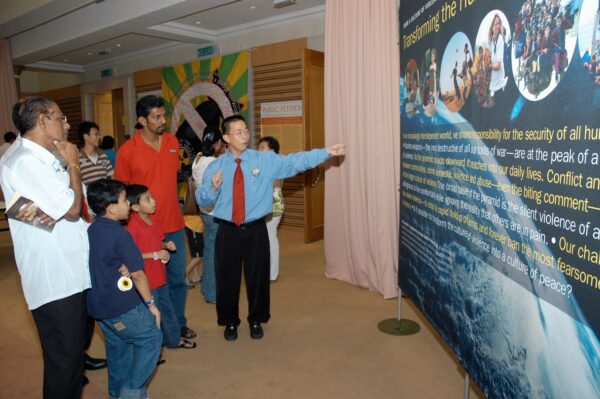
“From a Culture of Violence to a Culture of Peace: Transforming the Human Spirit” exhibition in Selangor (2007) The SGI’s key nuclear abolition activities over the past decade include a renewed effort to rouse public opinion and create a global grassroots network dedicated to abolishing such weapons of mass destruction through the People’s Decade for Nuclear Abolition campaign, launched in September 2007. As part of this campaign, the SGI began touring awareness-raising exhibitions like “From a Culture of Violence to a Culture of Peace: Transforming the Human Spirit” (2007).
An international partner of the International Campaign to Abolish Nuclear Weapons (ICAN) since 2007, SGI has worked on various collaborative projects and activities to raise global public awareness of nuclear weapons. SGI and ICAN produced an exhibition titled “Everything You Treasure—For a World Free from Nuclear Weapons” (2012) and an animation titled “Reshape History” as a tool to raise awareness of the TPNW in order to gain wider acceptance and support for it from the general public.
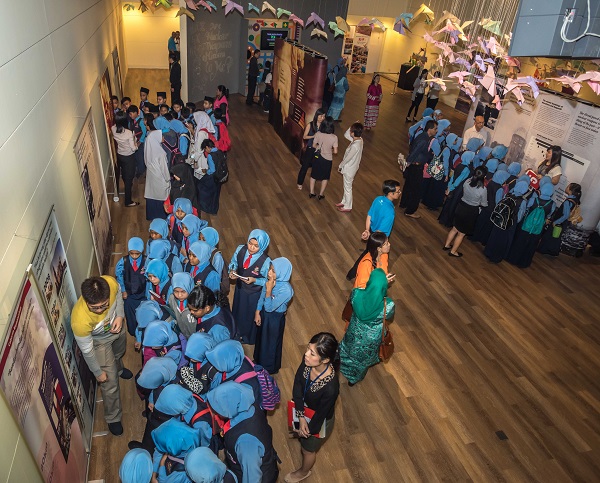
“Everything You Treasure—For a World Free from Nuclear Weapons” exhibition at Wisma Kebudayaan SGM (2015) The SGI has also been working to promote and publicise the testimonies of hibakusha (atomic bomb survivors) and other war survivors, preserving their voices for the future in a book and video format and inviting them to speak at events in Japan and around the world.
Soka Gakkai youth around the world have been particularly active in a variety of initiatives. Examples include the Senzatomica campaign in Italy, Our New Clear Future in the US and events promoted by the SGI-UK Youth Peace Committee. Additionally, more than five million signatures were collected supporting the Nuclear Zero petition by Soka Gakkai youth in Japan.
Sharing the moral and ethical responsibility of realising a world without nuclear weapons, SGI has also been strengthening solidarity and forming consensus amongst faith communities by issuing interfaith statements since 2014. For example, in August 2022, the SGI joined more than 100 organisations—Faith Communities Concerned about Nuclear Weapons—in issuing a joint statement, which was read at the session allocated for NGO presentations at the Tenth NPT Review Conference.
SGI has also striven to ensure that young people play a key role in the movement for nuclear weapons abolition. For example, in August 2015, an International Youth Summit for Nuclear Abolition was held in Hiroshima organised by a steering committee consisting of many organizations including SGI and ICAN. 30 young people representing various peace organisations from 24 countries attended the summit. As a follow-up, an international youth network named Amplify was launched the following year.
In June 2022 during the First Meeting of State Parties of the TPNW at Vienna, youth representatives from SGI participated in the Youth MSP session where they held a workshop on grassroots educational movements and carried out a discussion on reshaping the discourse around nuclear weapons and alternative educational approaches that empower learners.
- Does Malaysia Support Nuclear Abolition?
In the international arena, Malaysia has been actively promoting the ban on nuclear weapons. The Malaysian Government has always supported UN resolutions on nuclear disarmament such as the Nuclear non-proliferation treaty (NPT) and the expansion of nuclear-weapon-free zones. The Malaysian Permanent Representative to the United Nations chaired the Preparatory Conference for the Nuclear Non-Proliferation Treaty in 2019 as well as the Main Committee I on Nuclear Disarmament at the 10th NPT Review Conference in 2022.
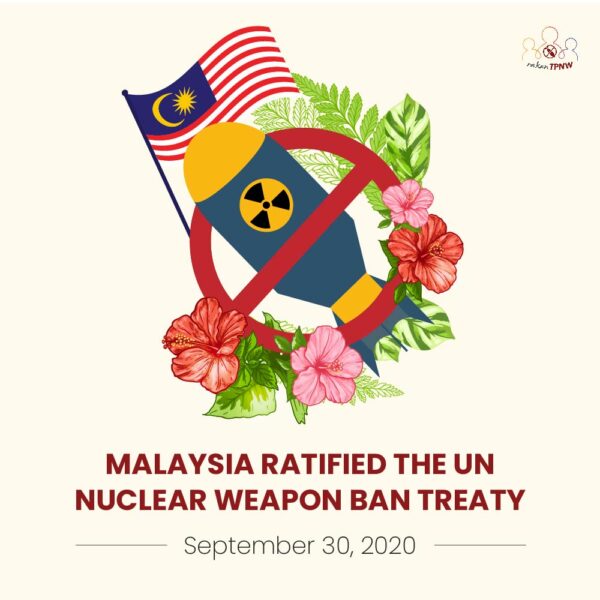 Some ten years before the TPNW was adopted, Malaysia and Costa Rica had submitted a model “Nuclear Weapons Convention” (NWC) to the UN General Assembly. Malaysia had submitted resolutions to the UN General Assembly every year until the adoption of the Nuclear Ban Treaty in 2017.
Some ten years before the TPNW was adopted, Malaysia and Costa Rica had submitted a model “Nuclear Weapons Convention” (NWC) to the UN General Assembly. Malaysia had submitted resolutions to the UN General Assembly every year until the adoption of the Nuclear Ban Treaty in 2017.Malaysia signed and ratified the Treaty on the Prohibition of Nuclear Weapons (TPNW) on 20 September 2017 and 30 September 2020 respectively. It was among the first 50 state parties to the treaty when it entered into force on 22 January 2021.
In August 2019 during a visit to Japan, the Prime Minister of Malaysia at that time, Dr Tun Mahathir Mohamad also called on Japan, the only country in the world to have been attacked by nuclear weapons, to support the TPNW.
-
How has SGM been promoting nuclear abolition?
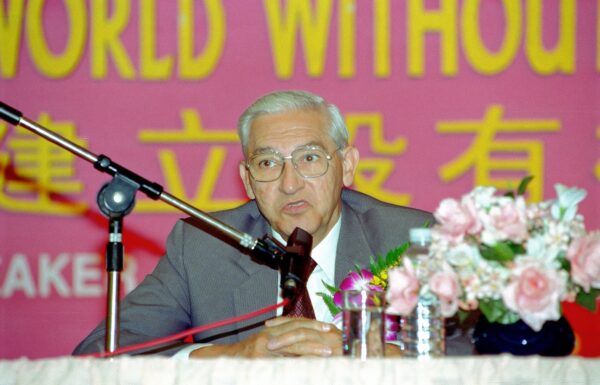
ICAN co-founder Dr Ronald McCoy speaks on “Building a World without Nuclear Weapons” (1997) Soka Gakkai Malaysia (SGM) has been conducting various events to spread awareness and empower people to take action for peace. In 1997, SGM held its first peace talk at the SGM Cultural Centre in Cheras, inviting ICAN co-founder Dr Ronald McCoy to speak on “Building a World without Nuclear Weapons”. In the years that follow, SGM has continued to organise various talks as well as participate in external forums to spread awareness about the catastrophic effects of nuclear weapons, especially to the younger generation as well as to highlight the importance of the TPNW.
Biennial Run for Peace events which were held since 2005 enabled people from all walks of life to come together in solidarity for peace. Furthermore, through the 2019 Run for Peace, SGM made a statement of peace to the general public: “We support all government efforts to abolish nuclear weapons, including the ratification of the Treaty on the Prohibition of Nuclear Weapons”. This also led to 11 members of parliament signing the ICAN parliamentary pledge, stating their support for the TPNW.
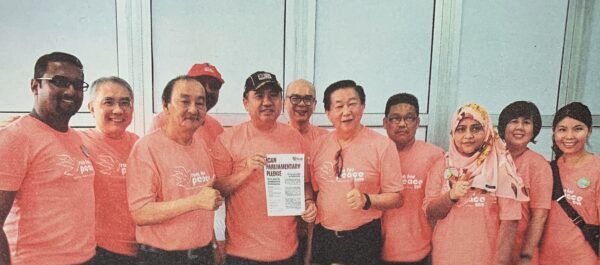
Minister of Transport Anthony Loke Siew Fook (fifth from left) holding the ICAN Parliamentary Pledge that he has signed (2019) More than 120,000 signatures supporting nuclear abolition were collected and submitted to the Ministry of Foreign Affairs in 2000. In 2015, the SGM Youth Division also conducted a survey on nuclear weapons awareness among the Malaysian public.
SGM had also translated the awareness-raising exhibitions like “From a Culture of Violence to a Culture of Peace – Transforming the Human Spirit” exhibition and the “Everything You Treasure – For a World Free from Nuclear Weapons” into Malay and Chinese. These exhibitions have toured around the country – allowing students and the public as a whole the opportunity to learn about the issue to gain a better understanding of the dangers of nuclear weapons. Students from primary school to university have also been involved as narrators for the exhibition. More than 150,000 people have viewed the “From a Culture of Violence to a Culture of Peace – Transforming the Human Spirit” exhibition (2007-2015). Meanwhile, more than 70,000 to date have viewed the “Everything You Treasure” exhibition (2015-present). These anti-nuclear weapons awareness campaigns were instrumental in promoting Malaysia’s ratification of the Nuclear Weapons Ban Treaty.
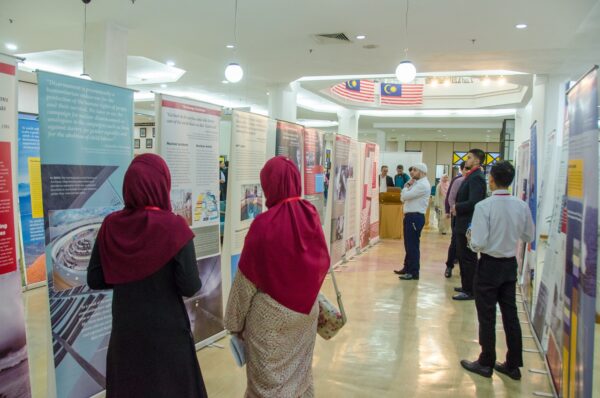
“Everything You Treasure” exhibition held at IIUM (2019) To reach out to more people, especially the young, SGM also initiated a social media platform, called Rakan TPNW (Friends of TPNW) to spread awareness about these issues and to promote understanding of the Treaty on the Prohibition of Nuclear Weapons. At the heart of all these activities is the emphasis to cultivate a culture of peace in all lives.
Rakan TPNW also collaborated with Tarinao Malaysia to present an online dance performance to commemorate the 75th anniversary of the atomic bombings of Hiroshima and Nagasaki. Through dance and music, nine artists comprising dancers and musicians from diverse backgrounds endeavoured to bring greater awareness to the public about the devastating impacts of this devilish weapon of mass destruction, the untold suffering of the victims and the need to respect the dignity of every single life. They also hoped to bring the era of nuclear weapons to an end.

Rakan TPNW and Tarinao present online dance performance calling for end to nuclear weapons Supporting the Malaysian government’s effort in ratifying the TPNW, SGM also produced a documentary titled “Our Journey Towards Nuclear Disarmament” in 2020 and included interviews with a co-founder of ICAN, a Malaysian second-generation hibakusha, and representatives from the Ministry of Foreign Affairs Malaysia and SGM. An SGM youth also participated in a Summit for the Renunciation of War organised by Soka Gakkai Youth Division (Japan).
Additionally, realising the importance of fostering the future generation, the young children and students of SGM have been participating in sessions where they learn and share about the urgent need to eliminate nuclear weapons, transform the culture of violence and take action to contribute to peace. For example, SGM Student Division has been holding forums annually based on SGI President Ikeda’s Peace Proposal. The SGM Junior Division also held an Online Peace talk titled “Journey to Banning the Nukes”.
SGM also translated a digital educational tool by produced by SGI in cooperation with ICAN to provide a brief introduction to the TPNW and its significance.
What is Rakan TPNW?
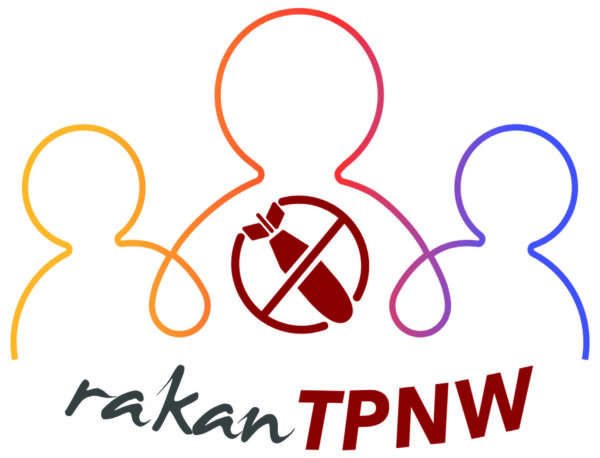 Rakan TPNW (“Rakan” means “Friend” in Malay; pronounced as “Raa-kahn”) is a social media initiative by SGM to create a world without nuclear weapons through creating awareness of and promoting the Treaty on the Prohibition of Nuclear Weapons (TPNW). Nuclear weapons are one of the greatest threats to the existence of humanity and all other life on Earth, including the planet itself. Through this initiative, Rakan TPNW aims to awaken and harness the power of common people to create a world free from the threat of nuclear annihilation.
Rakan TPNW (“Rakan” means “Friend” in Malay; pronounced as “Raa-kahn”) is a social media initiative by SGM to create a world without nuclear weapons through creating awareness of and promoting the Treaty on the Prohibition of Nuclear Weapons (TPNW). Nuclear weapons are one of the greatest threats to the existence of humanity and all other life on Earth, including the planet itself. Through this initiative, Rakan TPNW aims to awaken and harness the power of common people to create a world free from the threat of nuclear annihilation.
You can find Rakan TPNW on Facebook and Instagram.






